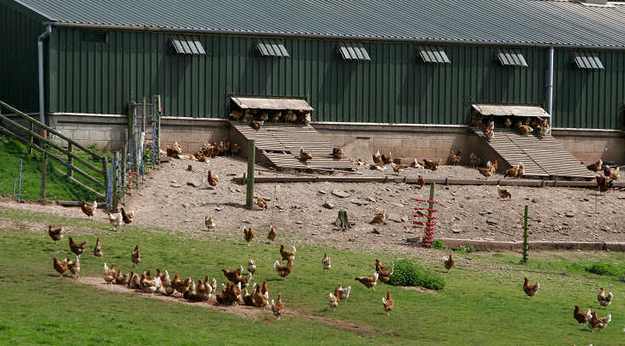Chicken bones, eggs, and activated vitamin D in eggs increased with 2 hours of daily UVB
Effects of B-Wave Ultraviolet Supplementation Using Light-Emitting Diodes on Caged Laying Hens during the Later Phase of the Laying Cycle.
Animals (Basel). 2019 Dec 19;10(1). pii: E15. doi: 10.3390/ani10010015.
Wei Y1,2,3, Zheng W1,2,3, Li B1,2,3, Tong Q1,2,3, Shi H1,2,3, Li X1,2,3.

📄 Download the PDF from Sci-Hub via VitaminDWiki
Caged laying hens are prone to calcium deficiencies, resulting in osteoporosis and egg quality deterioration during the later phase of the laying cycle. Fluorescent light and light-emitting diodes (LEDs), which are widely used in poultry houses now, are both deficient in ultraviolet (UV) light, the lack of which is detrimental to chickens' welfare and health. This study was conducted to investigate the effects of UVB light supplementation using LEDs on the bone traits, blood parameters, laying performance, and egg quality for caged laying hens at 68-75 weeks. In total, 120 Jingfen laying hens were randomly assigned to four different groups, with three replicates in each group (10 hens in each cage as a replicate). UVB-LED lamps installed under the feed troughs were used to provide UVB light (296-316 nm) for the birds in the three treatment groups (1 h, 2 h, and 3 h UVB supplementation per day, respectively), while the control group was not exposed to UVB-LED light. Bone traits, egg quality, and amounts of calcium (Ca), phosphorus (P), 25-hydroxyvitamin D3 (25(OH)D3), 1,25-dihydroxyvitamin D3 (1,25(OH)2D3), and 7-dehydrocholesterol (7-DHC) in both the serum and egg yolks were tested during the experiment.
The results demonstrated that UVB-LED exposure significantly increased the
bone mineral density (BMD),
egg production, and
yolk 1,25(OH)2D3 concentrations (p < 0.05),
and reduced the content of serum 7-DHC (p < 0.05), especially in the 2 h/day group; however, it did not improve egg quality, vitamin D metabolites, or photoproducts in the serum and yolk 25(OH)2D3 concentrations (p > 0.05).
This study concluded that UVB supplementation using LEDs had a positive effect on caged laying hens during the later phase of the laying cycle.
